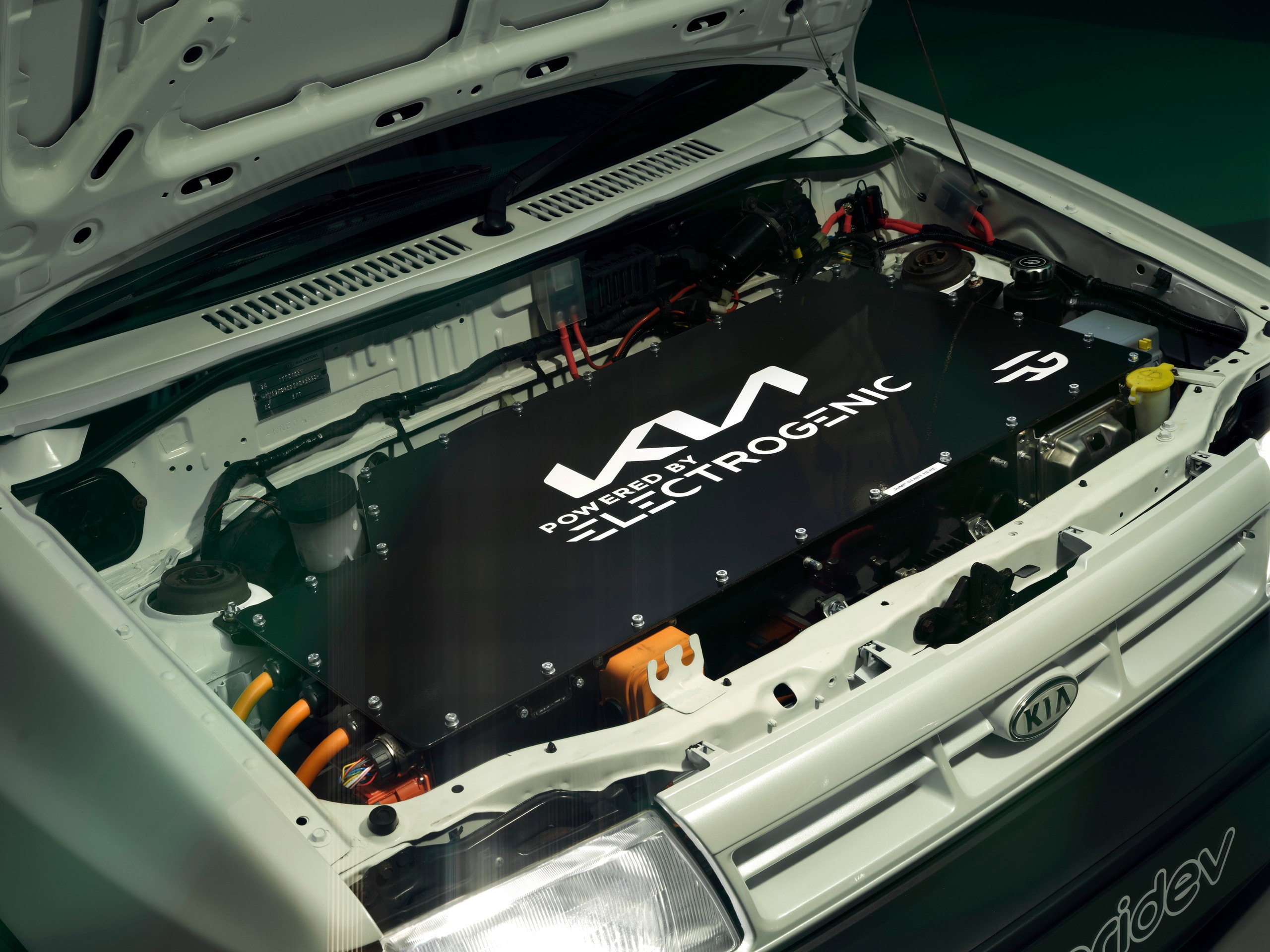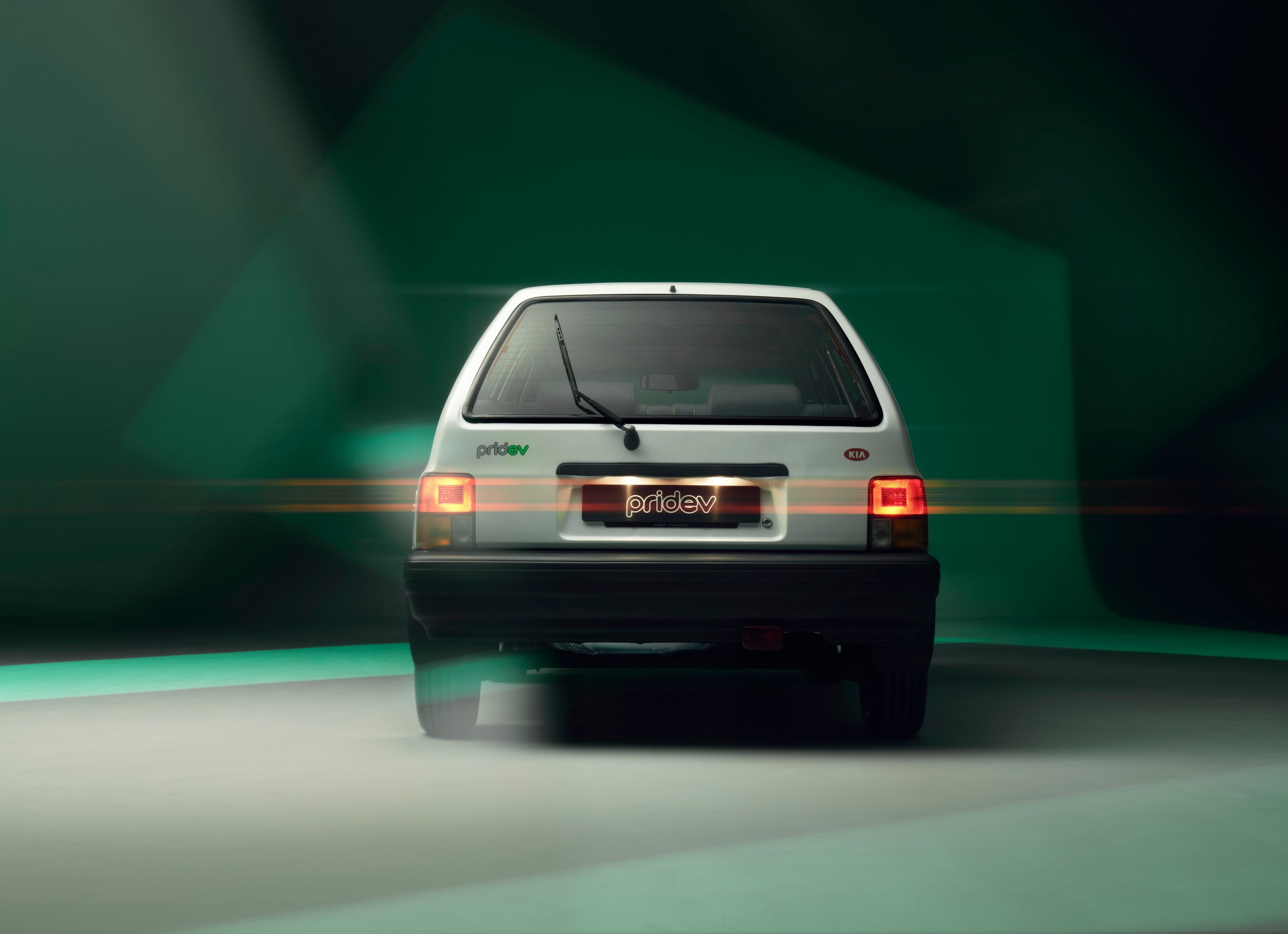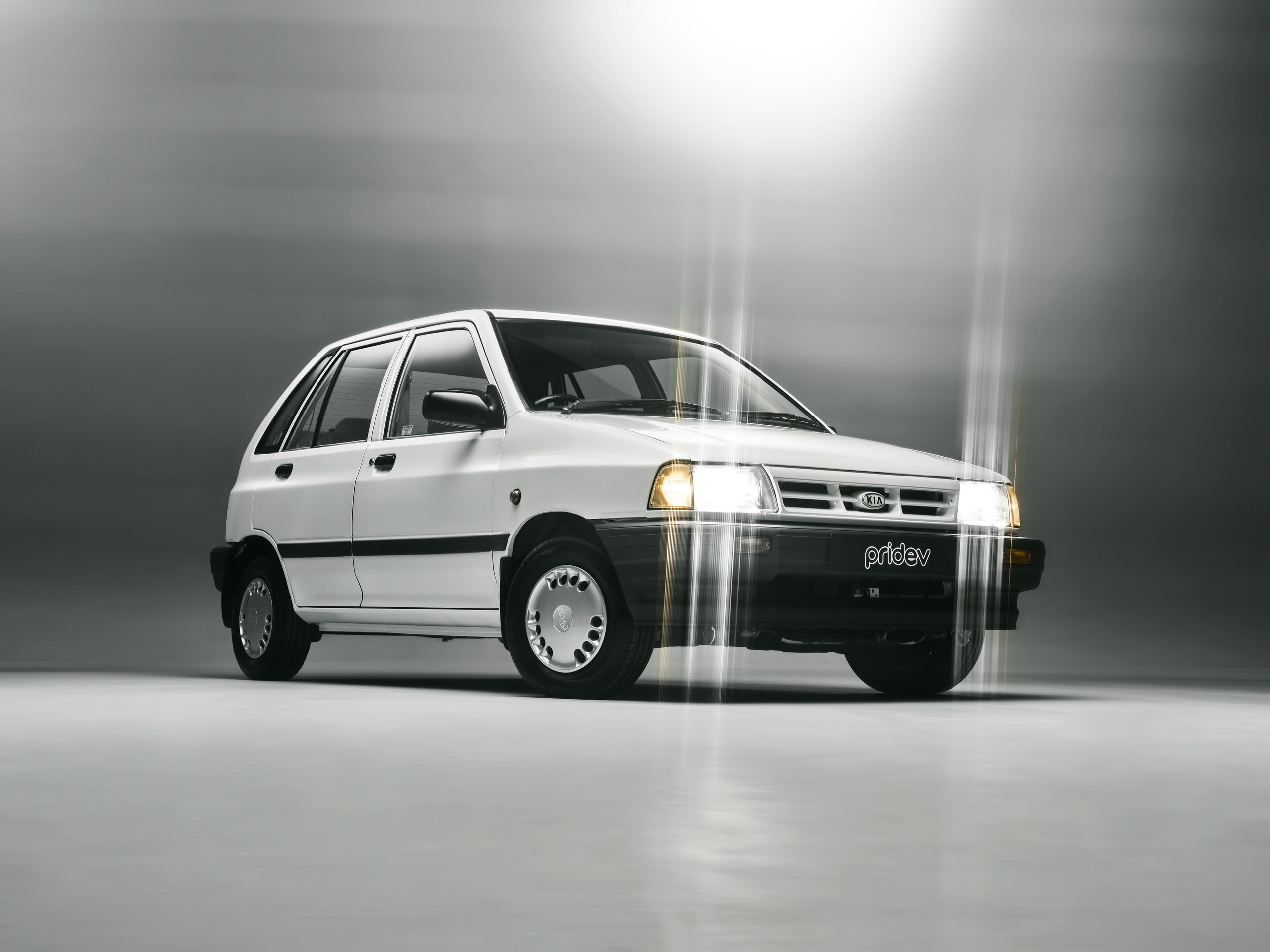Unassuming and often overlooked, Kia Motors has quietly celebrated its 80th anniversary in 2024. Far from the extravagant celebrations of some of its competitors, Kia’s approach has been understated.
However, this week, the British division couldn’t resist marking the occasion with a unique tribute: the Pride EV restomod. The Pride, a subcompact hatchback produced from 1987 to 2000, is a name that may not evoke immediate recognition today.
Back when Kia was a far cry from the automotive behemoth it is now, the Pride was a relatively unimpressive car, powered by small four cylinder engines and offering modest performance.

Given its humble origins, the Pride might not be the first choice for an electric vehicle conversion. Yet, Kia UK, in collaboration with powertrain and conversion specialists Electrogenic, has dared to do just that. This decision is not entirely unexpected, as the British division has a history of producing limited edition vehicles, such as the Stinger GT420 and Soul EV beach buggy.
The Pride EV restomod, revealed at the Bicester Heritage Scramble event, showcases Kia’s commitment to innovation and its ability to breathe new life into classic models. With its electric drivetrain, the Pride EV offers a modern twist on a timeless design, combining nostalgia with cutting edge technology.
Kia’s 80th anniversary celebration was a unique project involving the transformation of a 1996 Pride 1.3 LX into an electric vehicle. This ambitious endeavor aimed to showcase the potential of electric vehicle technology and highlight Kia’s commitment to innovation. The original powertrain, including the engine, fuel tank, and lines, was completely replaced with a modern electric system.
The centerpiece of the electric conversion was a powerful motor capable of delivering 106 horsepower and 235 Nm of torque. This represented a substantial increase over the original engine, providing a significant performance boost. To complement the motor, two battery packs were installed, each with a capacity of 10 kWh.
These batteries provided a range of up to 120 miles, making the Pride suitable for urban commuting and short trips. The electric system offered three distinct drive modes: Eco, Auto, and Sport. The Eco mode prioritized efficiency and extended range by limiting power output.
The Auto mode provided a balanced combination of performance and efficiency, while the Sport mode unleashed the full potential of the electric motor, delivering exhilarating acceleration and dynamic handling. Despite the extensive modifications, the Pride’s exterior retained its original charm. The iconic design, featuring small 12-inch steel wheels, remained largely unchanged.

However, the vehicle received a fresh coat of paint and upgraded headlights to ensure compliance with road safety regulations. Inside the cabin, the original interior elements were retained, creating a sense of familiarity. The grey cloth seats with lime green piping added a touch of vibrancy and connected the Pride to Kia’s more modern EV models.
While the dashboard instruments remained largely unchanged, the fuel gauge was repurposed to display the remaining battery charge. The Kia Pride EV project was a testament to the versatility and adaptability of electric vehicle technology.
It demonstrated that even older vehicles could be transformed into efficient and sustainable transportation solutions. By showcasing the potential of electric vehicles and highlighting Kia’s commitment to innovation, this project served as a valuable contribution to the ongoing transition to a cleaner and greener future.

